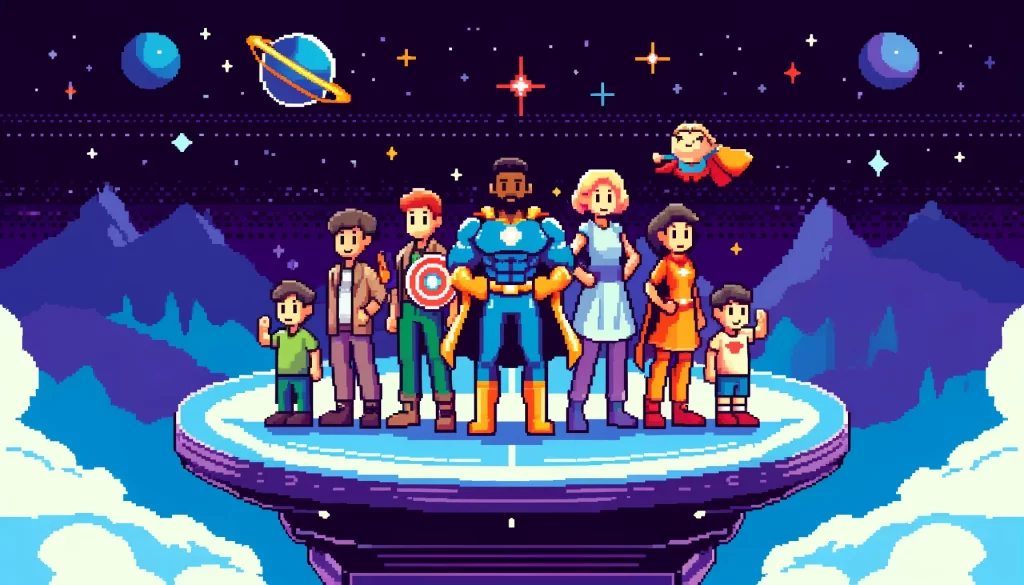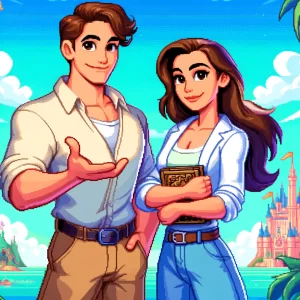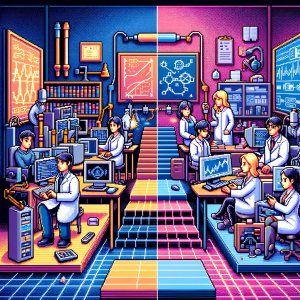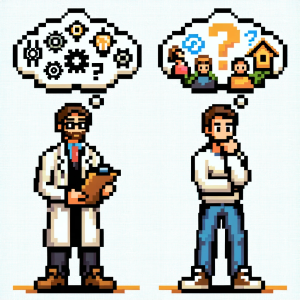
Breaking Down Gender Stereotypes in Children’s Media: What Disney’s Marvel and Star Wars Franchises Teach Our Kids
In the kaleidoscopic worlds of Marvel and Star Wars, where heroes face insurmountable odds and villains plot sinister schemes, a subtle yet powerful narrative is unfolding: how these epic franchises portray gender for young minds.
The Quest Begins: Understanding Marvel’s Avengers Assemble
Imagine the Avengers—Iron Man, Captain America, Hulk, and others—gathering to protect the world. Among them is Black Widow, the team’s sole female protagonist. In Avengers Assemble, she stands alongside her male teammates but often finds herself on the periphery.
This mirrors broader trends in superhero media, where male superheroes dominate the screen with exaggerated muscles, aggression, and banter. Black Widow tries to keep up, donning her skin-tight suit and engaging in battles, yet her contributions seem overshadowed by the male-centric ‘lad culture.’ Even within her team, she’s sometimes treated as an outsider. This portrayal hints at a troubling message: masculinity dominates superhero culture, and females remain underrepresented.
A New Galaxy: Exploring Star Wars Rebels
In Star Wars Rebels, the galaxy rebels against the oppressive Empire. The series introduces a more diverse crew: Kanan, Ezra, Zeb, Hera, and Sabine. Here, emotional vulnerability and cooperation are emphasized, presenting multifaceted masculinities and strong female figures.
Kanan, a Jedi Knight and crew leader, displays emotional vulnerability while mentoring Ezra. Hera, the ship’s pilot, embodies a nurturing leader. Despite being a strong character, she’s often confined to a domestic space—her ship. Sabine, the young action girl, shows confidence and skill in battle, contrasting the nurturing Hera.
Yet, even in this progressive world, certain stereotypes persist. The Force, which grants supernatural power, remains a male domain. The male characters also hold top positions, subtly reinforcing patriarchal power dynamics.
The Hidden Impact on Young Viewers
Why does this matter? Research shows that children internalize the media they consume. Superhero media often correlates with higher aggression and weapon play, particularly among young boys. Meanwhile, boys and girls exposed to media violence are more likely to express stereotypical attitudes toward gender roles.
Navigating the Hero’s Journey
So, how can parents and educators guide children through this maze of messages?
- Discuss Media Together: Encourage conversations around the stereotypes and behaviors presented in these series. How does the portrayal of heroes impact their understanding of gender roles?
- Explore Alternative Content: Look for shows that promote teamwork, cooperation, and emotional expression in diverse, non-stereotypical ways.
- Balance the Narrative: Offer a mix of Marvel and Star Wars content to expose children to a range of portrayals, from the emotionally charged rebels to the more traditional Avengers.
Discussion Questions for You
- How do you think children’s perceptions of heroes change based on the portrayal of characters in Marvel’s Avengers Assemble versus Star Wars Rebels?
- Do you believe that subtle stereotypes still have an impact on children’s understanding of gender roles? Why or why not?
Share your thoughts in the comments below!
Embark on a Scientific Adventure:
Dive into the world of science with our weekly newsletter! It’s perfect for teachers and science lovers who want to stay up-to-date with the newest and coolest discoveries. Each issue is filled with the latest research, major breakthroughs, and fascinating stories from all areas of science. Sign up for free and take your teaching and learning to the next level. Start your journey to becoming more informed and in tune with the constantly changing world of science. Subscribe today!
About the Author
Jon Scaccia, with a Ph.D. in clinical-community psychology and a research fellowship at the US Department of Health and Human Services with expertise in public health systems and quality programs. He specializes in implementing innovative, data-informed strategies to enhance community health and development. Jon helped develop the R=MC² readiness model, which aids organizations in effectively navigating change.



